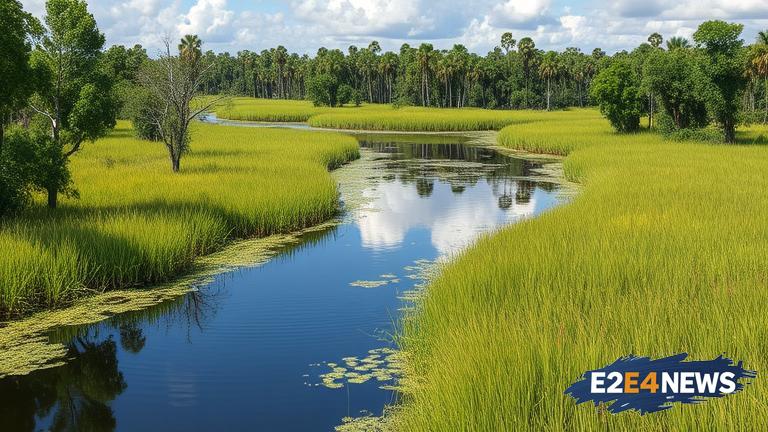The state of Florida has made a substantial move towards preserving the Everglades, a unique and vital ecosystem, with the introduction of a new reservoir in Hendry County. This development is part of a broader effort to restore and protect the Everglades, which has been facing numerous environmental challenges. The new reservoir is designed to help manage water flow and quality, reducing the risk of harmful algal blooms and protecting the diverse wildlife that inhabits the area. The Everglades, often referred to as the ‘River of Grass,’ is a complex network of wetlands and waterways that stretches from Lake Okeechobee in central Florida to the Gulf of Mexico. It is home to a wide variety of plant and animal species, many of which are found nowhere else in the world. However, the Everglades has been under threat from human activities such as agriculture, urbanization, and climate change, which have altered the natural water flow and led to a decline in water quality. The construction of the new reservoir is a key component of the Comprehensive Everglades Restoration Plan (CERP), a federal-state initiative aimed at restoring the natural hydrology of the Everglades. The reservoir will help to store excess water during the wet season, reducing the need for damaging water releases into the Caloosahatchee and St. Lucie rivers. This, in turn, will help to prevent the spread of algal blooms, which have had devastating effects on local wildlife and ecosystems. The project has been welcomed by environmental groups and local communities, who see it as a crucial step towards protecting the Everglades and preserving its natural beauty. The reservoir is expected to have a positive impact on the local economy, with benefits for tourism, fishing, and other industries that rely on a healthy Everglades ecosystem. However, some concerns have been raised about the potential impacts of the reservoir on local wildlife and ecosystems, and ongoing monitoring and assessment will be necessary to ensure that the project is successful. Despite these challenges, the construction of the new reservoir is a significant step forward for Everglades conservation, and demonstrates the state’s commitment to protecting this unique and valuable ecosystem. The project is a testament to the power of collaboration and cooperation between government agencies, environmental groups, and local communities, and serves as a model for conservation efforts in other parts of the country. As the project moves forward, it will be important to continue monitoring its progress and addressing any challenges that arise, to ensure that the Everglades is protected for generations to come. The success of this project will have far-reaching implications for the health of the Everglades and the many species that depend on it, and will serve as a vital component of the state’s broader conservation efforts. With the addition of the new reservoir, Florida is taking a significant step towards a more sustainable future, one that balances the needs of human communities with the need to protect and preserve the natural environment.
